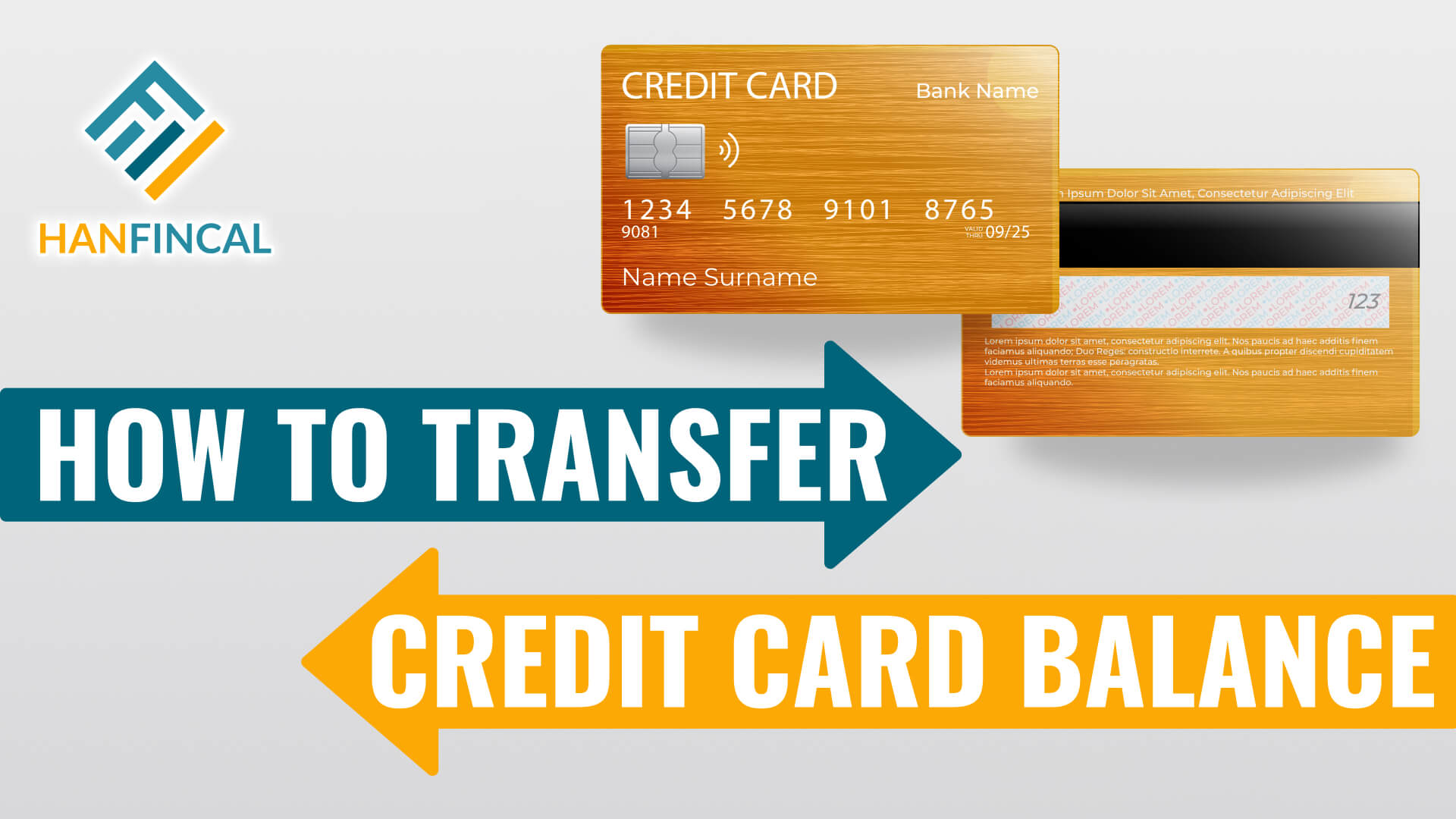Transferring a credit card balance should be used to foster debt payments and pay less interest without incurring fees or harming your credit rating. Hanfincal will demonstrate how to transfer credit card balance today. Maintain your focus and continue to explore.
1. Is a balance transfer a good idea?
A balance transfer is a good idea to pay off credit card debt and qualify for a card with a 0% introductory APR. A card like this could save you a lot of money on interest, giving you an advantage when paying off your debts.
However, if you cannot pay off a balance in three months or less, or if you are unable to qualify for a good 0% APR offer, a balance transfer is unlikely to be effective. In addition, a balance transfer will not work if you have a poor credit score.

Is a balance transfer a good idea?
2. How do balance transfers work?
A balance transfer moves outstanding debt from one credit card to another, usually with a significantly lower promotional interest rate and better benefits.
This is how balance transfers work:
- After you’ve been approved for a card with a 0% interest balance transfer offer, find out whether the 0% rate is automatic or subject to a credit check.
- Decide which balances to transfer; credit cards with high-interest rates should be prioritized.
- Figure out the transfer fee, typically 3% to 5% ($30 to $50 for every $1,000 transferred). Many credit card issuers will waive this fee and provide a promotional or introductory period of 6 to approximately 18 months.
3. How to transfer a credit card balance?
There are 6 simple steps to transfer a credit card balance:
- Step 1: Check your current credit card balance and interest rate.
- Step 2: Apply for a balance transfer card.
- Step 3: Request a balance transfer.
- Step 4: Transfer the balance to the new credit card.
- Step 5: Wait for the transfer to go through.
- Step 6: Pay off your credit card balance.
Step 1: Check your current credit card balance and interest rate
The first thing you have to do is to check your current credit card balance and interest rate. The interest rate on your credit card is usually expressed as an annual percentage rate or APR.
Your goal is to choose a balance transfer card that accepts the amount you want to transfer and has a lower interest rate than the one you’re now paying on your debt.
Step 2: Apply for a balance transfer card
You can apply for a balance transfer credit card online in a few minutes after comparing and choosing the best one for yourself. To apply, you must provide basic personal and financial information such as your name, address, Social Security number, and income.
After filling out the necessary information, you submit the application and wait. If you receive confirmation that you have been approved for the balance transfer card, you can proceed with the transfer.
Keep in mind that applying for a balance transfer card may lead to a hard inquiry on your credit reports, which temporarily drop your credit score a little. However, it may raise your available credit and lower your credit utilization, which may improve your credit score. In general, a balance transfer may have little impact on your credit.
Step 3: Request a balance transfer
Here are 2 ways to request a balance transfer:
- Phone: To request a balance transfer, contact your issuer. You provide them with the account information and the amount to which you transfer the balance.
- Online: You can request a balance transfer by logging into your account and using the issuer’s online portal. Prepare to provide information about the debt you want to transfer, such as the issuer’s name, the debt amount, and account information.
Step 4: Transfer the balance to the new credit card
After completing the three previous steps, your next step is to transfer your current balance to a new card.
This process is also simple. You need to provide basic information about the credit cards you intend to transfer the balances, including the card numbers and the amounts you want to transfer to your new card.
Step 5: Wait for the transfer to go through
It can take two weeks or longer for a balance transfer to be approved and completed. It’s critical to continue making payments on your old cards until your balances have been completely transferred to your new 0% APR credit card. If you don’t, you risk accruing new interest charges and fees on your old credit cards due to missed payments.
Once your balance transfer is complete, you may not receive a notification, so check with your old credit card issuers to ensure the accounts show a $0 balance. You can stop making payments once you have confirmed the $0 balance.
Step 6: Pay off your credit card balance
After your balance transfers are completed, you can see the amount transferred to a new credit card. You now start paying off your credit card balance according to the term on a new credit card. However, if you can not transfer all your balance to the new card, remember to make at least a minimum payment on your old one.
Plan to pay off your balance — or at least the majority of it — during the introductory period, when your APR is at its lowest. By doing this way, you may save money on interest, pay off debt faster, and take advantage of a balance transfer.
After you’ve paid off your current debt, you should make a plan or create a budget to help you prevent incurring further credit card debt in the future.

How to transfer a credit card balance?
Many people know that a balance transfer can make debt consolidation and repayment much easier while saving money on interest. As a result, Hanfincal also assists you in putting out the horizon of how to transfer credit card balance, thereby accelerating your debt-free journey. If your credit score is above 670 and you owe less than $10,000, a balance transfer could be a great way to help you pay off your debt.
==> Read More:




